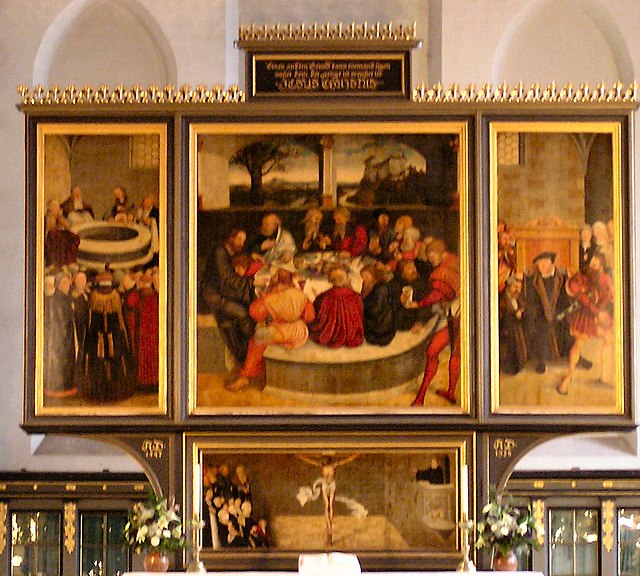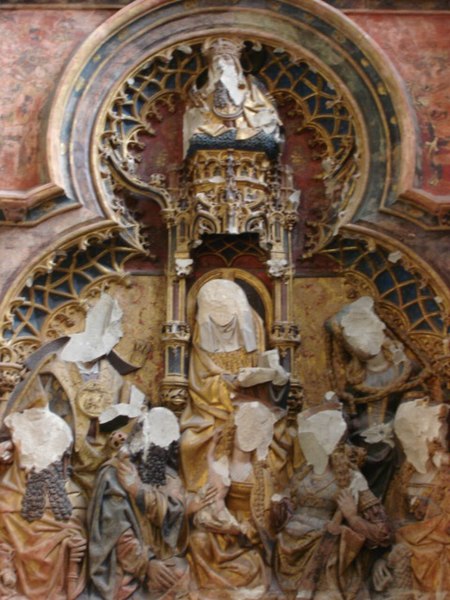Counter-Maniera or Counter-Mannerism is a term in art history for a trend identified by some art historians in 16th-century Italian painting that forms a sub-category or phase of Mannerism, the dominant movement in Italian art between about 1530 and 1590. Counter-Maniera or Counter-Mannerism reacted against the artificiality of the second generation of Mannerist painters in the second half of the 16th century. It was in part due to artists wishing to follow the vague prescriptions for clarity and simplicity in art issued by the Council of Trent in its final session in 1563, and represented a rejection of the distortions and artificiality of high Mannerist style, and a partial return to the classicism and balance of High Renaissance art, with "clarity in formal order and legibility in content".
Girolamo Siciolante da Sermoneta, Annunciation
Santi di Tito, Vision of St Thomas Aquinas (1593)
Lamentation, Scipione Pulzone, 1593
The Sacrifice of Isaac, by Ludovico Cigoli
Art in the Protestant Reformation and Counter-Reformation
The Protestant Reformation during the 16th century in Europe almost entirely rejected the existing tradition of Catholic art, and very often destroyed as much of it as it could reach. A new artistic tradition developed, producing far smaller quantities of art that followed Protestant agendas and diverged drastically from the southern European tradition and the humanist art produced during the High Renaissance. The Lutheran churches, as they developed, accepted a limited role for larger works of art in churches, and also encouraged prints and book illustrations. Calvinists remained steadfastly opposed to art in churches, and suspicious of small printed images of religious subjects, though generally fully accepting secular images in their homes.
Hans Holbein the Younger's Noli me tangere a relatively rare Protestant oil painting of Christ from the Reformation period. It is small, and generally naturalistic in style, avoiding iconic elements like the halo, which is barely discernible.
Cranach the Elder's Wittenberg Altarpiece. An early Lutheran work depicting leading Reformers as Apostles at the Last Supper.
Altar piece in St. Martin's Cathedral, Utrecht, attacked by Calvinists in the Beeldenstorm in 1566. This retable became visible again after restoration in 1919 removed the false wall placed in front of it.
Daniel Hisgen's paintings are mostly cycles on the parapets of Lutheran church galleries. Here the Creation (left) to the Annunciation can be seen.








